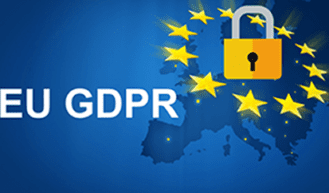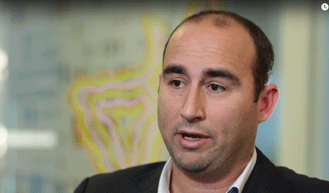But do I really need to blog?
Marketing
QBS group
If you want to be noticed and visible online (and this is not the time to go “nah – don’t think so”), then first of all you need an effective and optimized website – but let’s say you have that.
How do you then best go about attracting visitors and ultimately clients to your site? Well – the very best way is to have someone else point in your direction and say “they can help you” – as unbiased ambassadors will always beat direct commercials, but the next best thing is to establish yourself as being knowledgeable – so that people seek you out for advice. How to do that? Blogging is an excellent way to get your knowledge in eye-sight of your clients.
The added bonus is that, done correctly, publishing blog articles will earn you the title of “published author” on Google. Happy days! The more valuable articles you share through your blog, the higher you will be in the search results and that’s what you want.
With blogging you increase the chance of attracting attention – as you stand out among the many paid commercials. Blogging allows you to engage with like- minded people, build a relationship and in the world of business hopefully gain a future customer. Imagine the time (and therefore money) it would cost to share your knowledge one-to-one with prospects. Blogging is free advertising. A win-win.
How do you ensure that your blog is being read? Here are my 10 tips to ensure that your blog gets viewed and most importantly read.
1. Make titles as stimulating as possible (think of headlines, what attracts your eye first and what makes you want to read further?)
With the title of your article you draw the reader to you and you stimulate them to click through. The tantalizing title must of course fit in with the article otherwise the reader is disappointed. You can use the following tips when drawing up your blog title.
- Use emotion
- Name the problem and the solution
- Use important keywords
- Ask a Question
- Use irony (a little provoke or you can lure your reader out of the tent)
2. Make the article scannable
Make sure your reader can determine at a glance what your blog is about. You do that by choosing a clear structure
- Use summaries
- Keep the paragraphs and your sentences short (SEO does not like long and fuzzy sentences)
- Use subheadings (good for SEO)
- Use a striking layout (bold and italicized words)
- Use white space (which provides more overview).
- Use images
3. Use more than 300 words
Google likes longer articles and valuable information. The longer an article is, the sooner the search engine will return this article in the search results. With a long article, the chances are that there is a lot of valuable information in it.
4. Keep it simple, but do not make it simpler than it is (read: jargon is fun for colleagues but customers cannot always get that much)
As an expert, you know the terms that are often used within your field, but do not sprinkle with them all the time. Find a mode between expert and Jip and Janneke languages. Tip: Before you read it give your blog to your partner or a friend who is not in your field, and ask them to read to see if they understand everything.
5. Create conversation / interaction
Conversation / interaction is the most important thing you want to create on your blog. Do not just focus on sending your message but help and inform people with your blog. Start a conversation or substantive discussion by asking a question of your reader. Is this clear? Yet? Or do I say something weird now? Agree or disagree? What do you think? etc.
You may have written such a beautiful and interesting article but if no question is asked the only reactions you will get are thumbs and likes.
6. Ask intermediate questions in your blog
Your reader cannot answer questions that you ask. By asking questions in your article, the reader is already in the answer mode. These interim questions lower the threshold to answer the call to action (see point 10) at the end of your article. This increases the chance that your reader leaves a comment or takes action.
7. In addition to knowledge, interesting information and good news, share disappointments and less good news
That makes the image your reader has of you more real. Stories that provide recognition have the most impact. An experience does not necessarily have to be your experience, it can also be someone else’s experience, but you recognize the situation and you can empathize with it. Share your own story, your mistakes, learning moments and your successes. You also lower the threshold for people to respond and contact you. You connect faster with the other person. Just like in real life. What were the moments when you really had a connection with someone?
8. Work in your story from small to large
Start with a small example and work it out. Put it in a context. Make it funny, expand it. You can also divide your story across multiple blogs, but make sure you actually post it if you promise that to your readers. Follow up is important and you also run the risk of not appearing reliably if you do not comply with your agreements.
9. Move in your reader
There is no one type of reader, everyone uses information in a different way. Roughly you could divide them into four types:
- Passive recipient (29% of people); it has no time to read and only reads headlines.
- Digital snacker (31% of people); reads everything a bit, all day long. What he or she reads must be especially accessible.
- Enthusiastic traditional reader (20% of people); this reader reads everything in detail. Reads four newspapers and takes the time.
- The busy viewer (20% of people); Critical reader looking for background and interpretation, reads various types of channels and forms an opinion on this basis. Does not have a lot of time, so content should be good and fast to read.
(source: https://www.emerce.nl/cc?_r=/research/vier-typen-nieuwsconsumenten-aanpreekt)
10. Always use a ‘Call to action’ (CTA) at the bottom of your blog
With this you ask the reader to take action. For example:
- ask a question about the content of your blog
- announce an event
- offer a product
- indicate that people can contact you if they have questions.
Finally
I guess you are thinking ‘wow that is a lot of work’ Well yes that’s right it is! But what did you expect? If you want to get and keep the attention of your target audience, then you have to put in the time and effort. The advantage of blogging is (if you do it smartly) that your blog can last for years and thus can always be available and read by your target audience and attract them to you.
Even I find it difficult sometimesand that ‘divine inspiration’ is a myth for many people, so I have one last tip for you: Use the creativity and capacity of a pro and spend it.














































